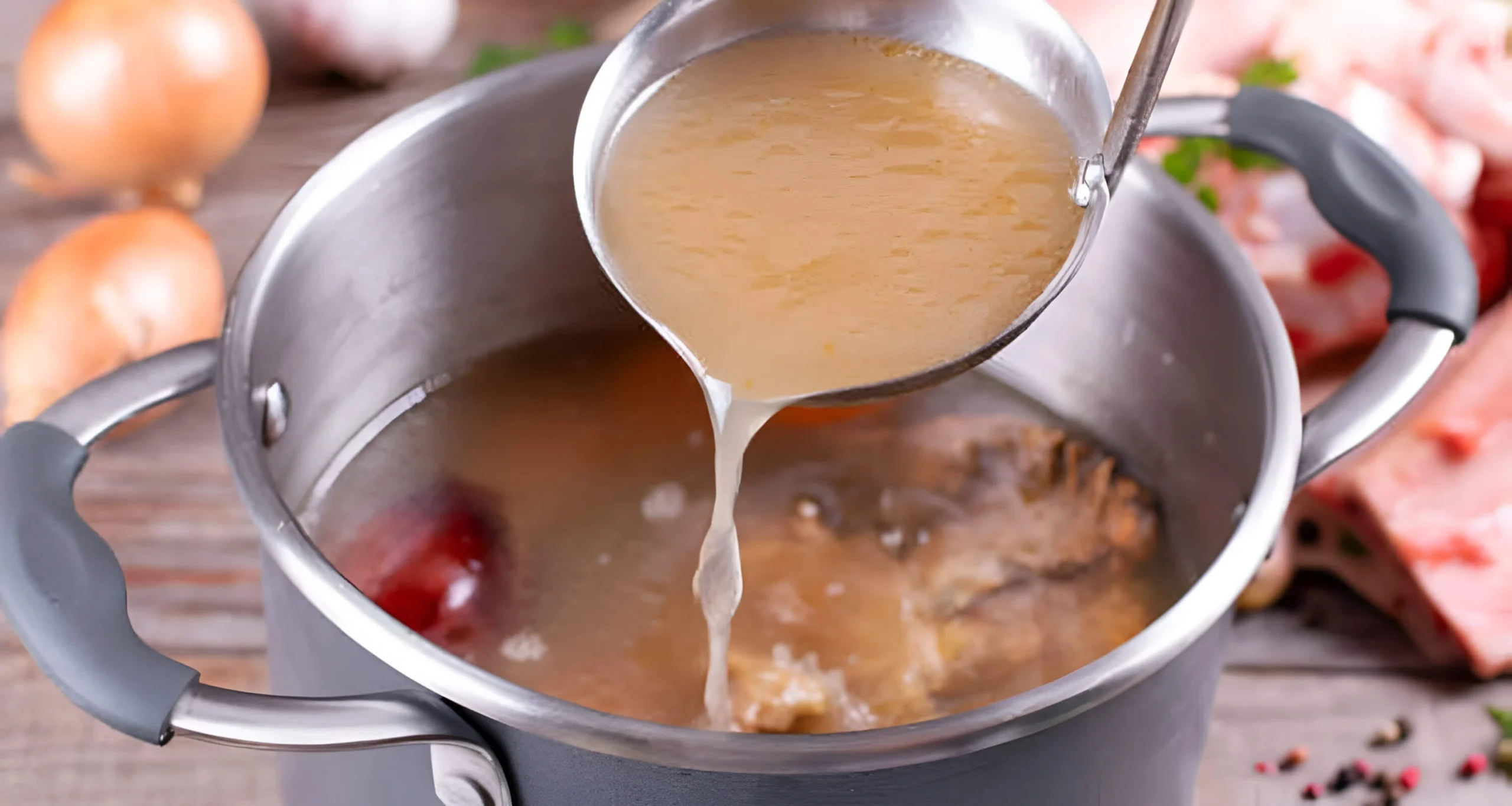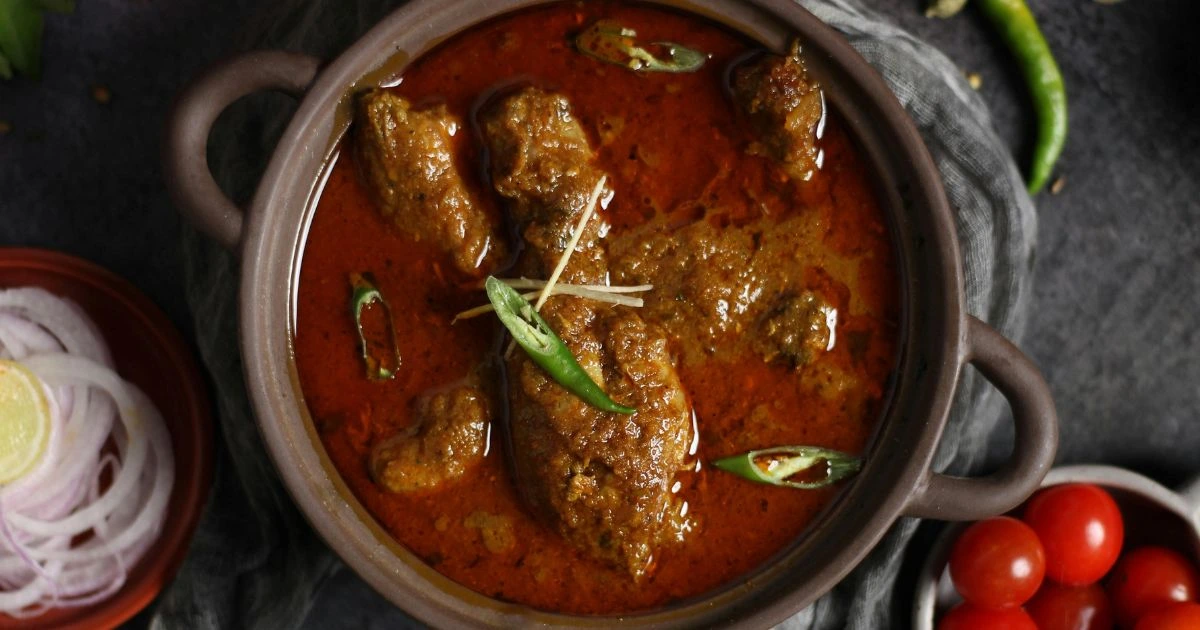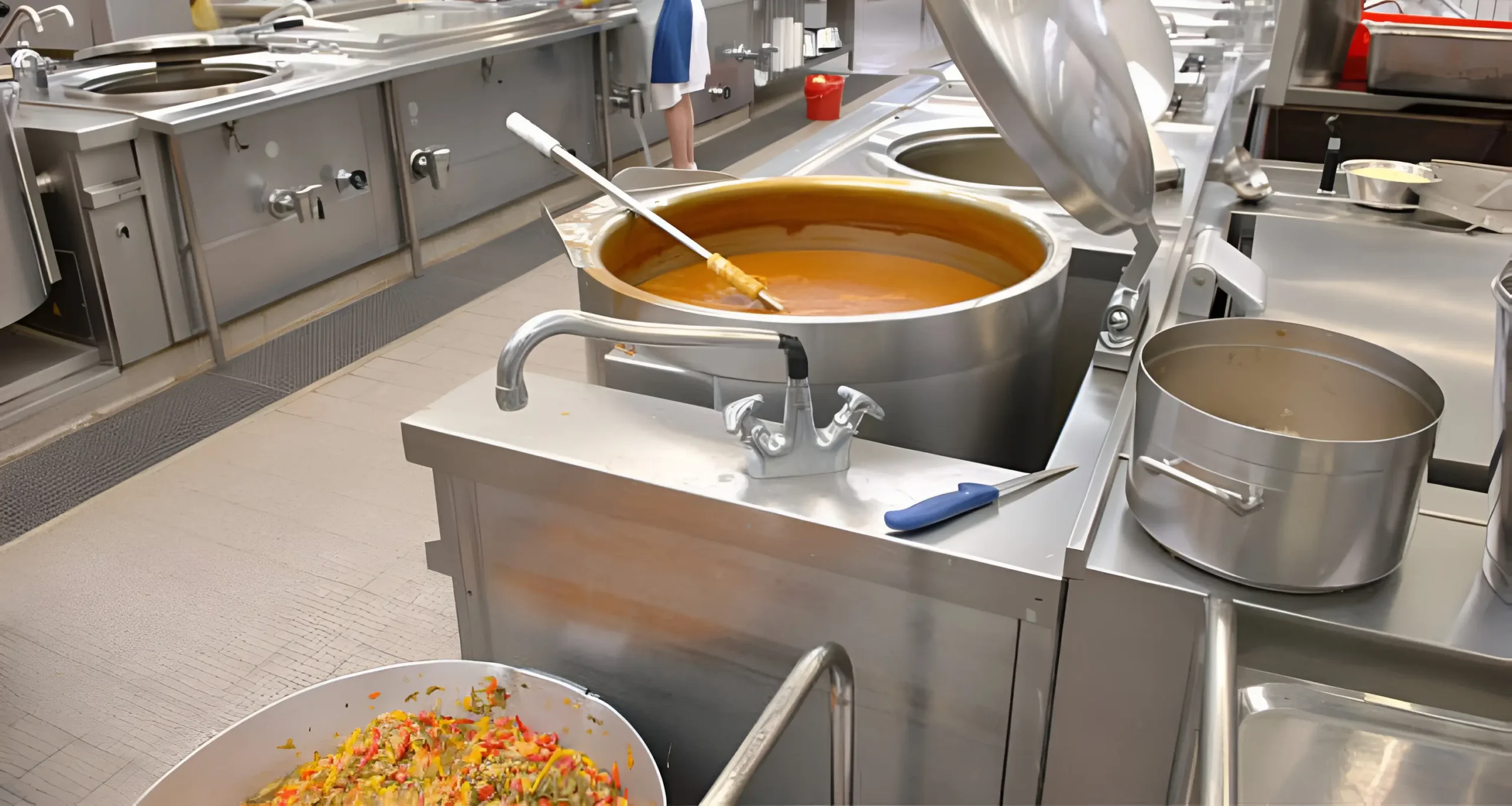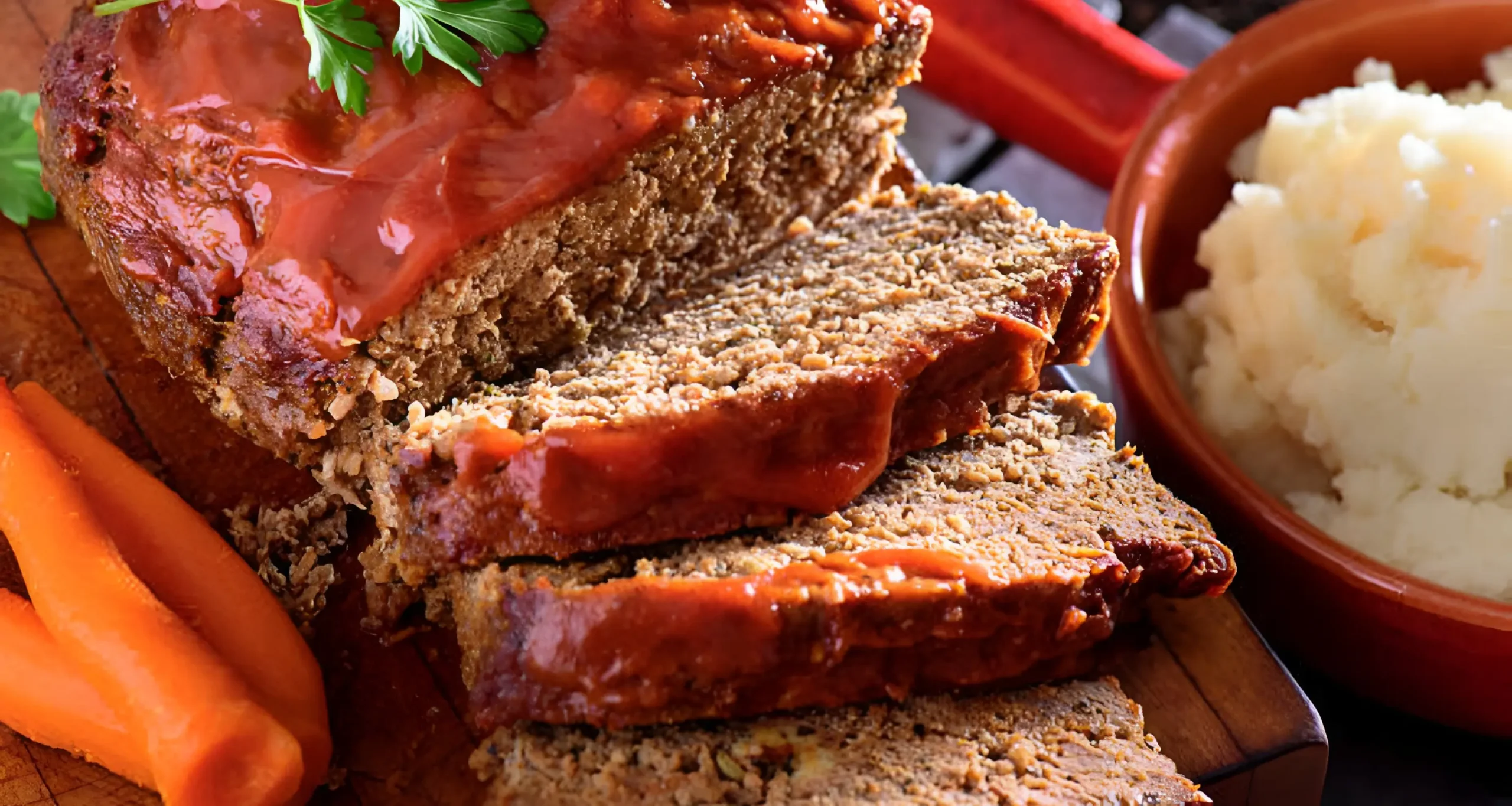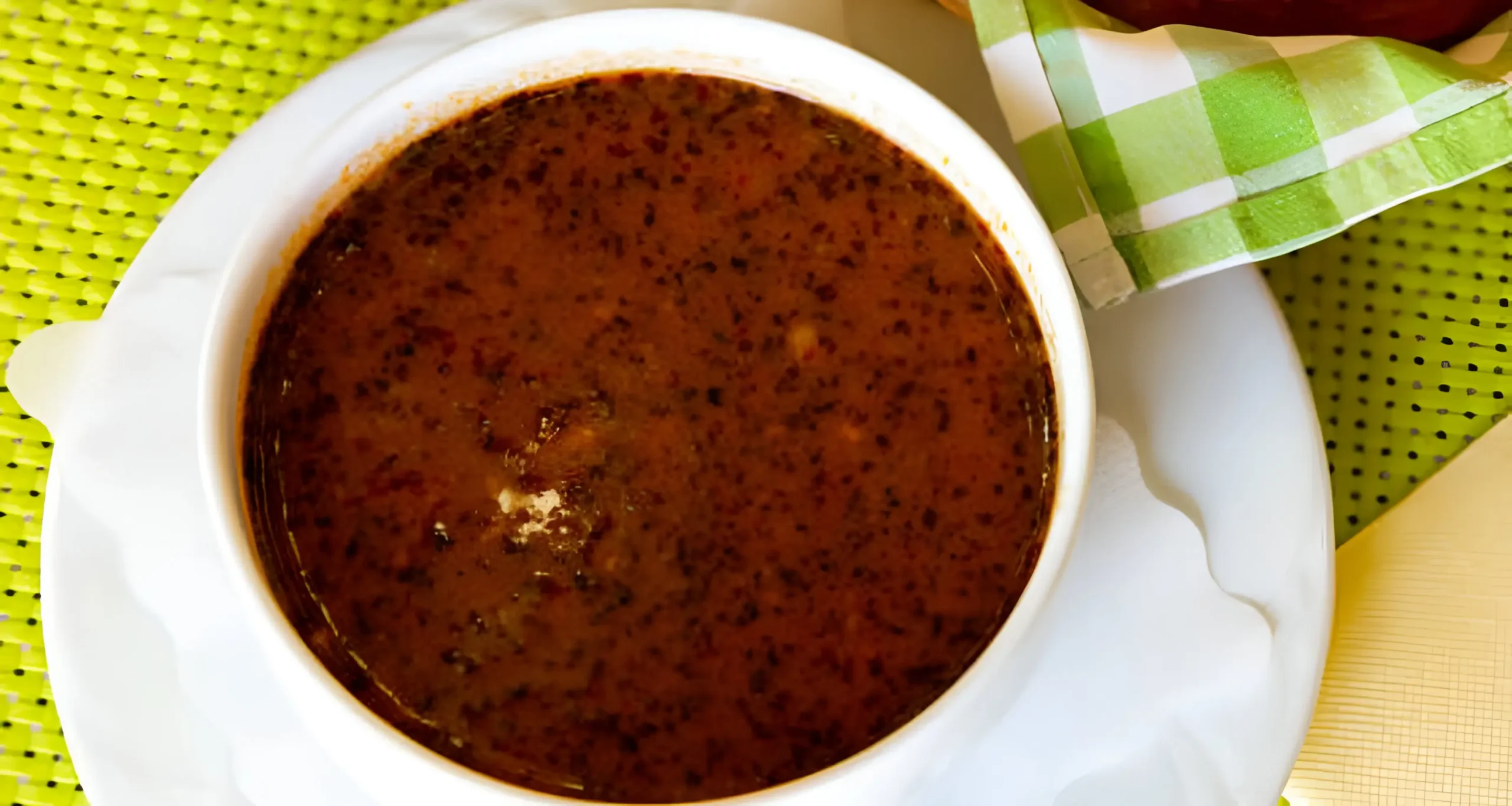Indulge in Bone Marrow Soup: Rich, Decadent Flavor Awaits
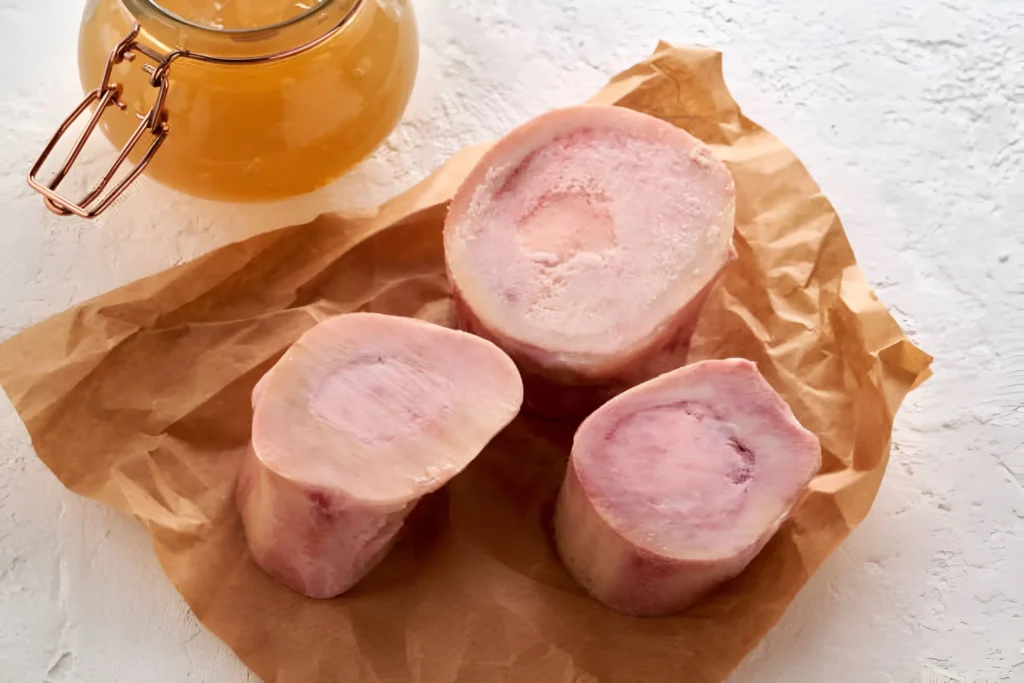
Get ready to dive into the ultimate comfort food that’s making waves in the culinary world. Bone marrow soup is a luxurious treat that turns simple ingredients into a feast. Every spoonful brings deep, rich flavors that take your taste buds on a journey of pure delight.
This isn’t just another soup. Bone marrow soup is steeped in centuries of culinary tradition. It’s packed with nutrients and boasts a complex taste profile. Both home cooks and professional chefs are falling in love with slow-simmered bone marrow soup. They’re creating dishes that are both nourishing and incredibly satisfying.
If you love cooking or just want a hearty meal with amazing depth, bone marrow soup is for you. Get ready to discover the secrets of this timeless dish. It’s a favorite among food lovers from all walks of life.
Key Takeaways
- Bone marrow soup delivers intense, rich flavors
- Nutrient-dense culinary experience
- Connects traditional cooking methods with modern cuisine
- Suitable for home cooks and professional chefs
- Offers profound nutritional benefits
Understanding Bone Marrow Soup: A Culinary Treasure
Bone marrow broth soup is a culinary tradition passed down through generations and cultures. It turns simple ingredients into a rich, flavorful dish. This nourishes both body and soul.
Historical Significance in Global Cuisines
Across the world, bone marrow broth soup is a key part of traditional cooking. It’s found in European kitchens and Asian street markets. This dish shows resourcefulness and nutritional wisdom.
- European Alpine regions used bone marrow soup for winter sustenance
- Asian cultures integrated bone broth into medicinal practices
- Indigenous communities valued bone marrow as a critical nutritional source
Nutritional Profile of Marrow-Based Broths
Your bone marrow broth soup is packed with nutrients. The slow-cooked bones release essential nutrients that boost overall health.
| Nutrient | Benefit | Concentration |
|---|---|---|
| Collagen | Joint Health | High |
| Minerals | Bone Strength | Excellent |
| Amino Acids | Muscle Recovery | Significant |
Traditional Healing Properties
Ancient healers saw bone marrow broth soup as more than food. They believed it was a powerful medicinal remedy. It helped support the immune system and aid in healing.
“Let food be thy medicine and medicine be thy food” – Ancient Wisdom
Essential Ingredients for the Perfect Bone Marrow Soup
Making a top-notch beef bone marrow soup starts with picking the best ingredients. These ingredients make the broth rich and nutritious. Your journey in the kitchen begins with knowing the key parts that turn simple items into a tasty meal.
The base of a great beef bone marrow soup includes several important things:
- High-quality beef marrow bones
- Fresh aromatic vegetables
- Robust herbs and spices
- Pure, filtered water
Now, let’s look at the key ingredients that will make your soup stand out:
| Category | Recommended Ingredients | Purpose |
|---|---|---|
| Bones | Grass-fed beef marrow bones | Rich flavor and nutrient base |
| Vegetables | Carrots, celery, onions | Depth of flavor and aromatics |
| Herbs | Fresh thyme, rosemary, parsley | Enhancing taste profile |
| Seasonings | Sea salt, black pepper | Balanced seasoning |
Pro tip: Always pick fresh, organic ingredients for better nutrition and taste. The quality of your ingredients really matters.
You can also add your own twist to the soup. Try adding root vegetables, garlic, or a bit of apple cider vinegar. These can make the flavors even richer.
Selecting Premium Marrow Bones for Your Soup
Making a great bone marrow stock starts with picking the right bones. The bones you choose greatly affect your soup’s taste.
Choosing the right bones is key for a tasty bone marrow stock. We’ll look at the best bones for a delicious soup base.
Best Cuts for Maximum Flavor
Not all bones are the same for making bone marrow stock. The top cuts include:
- Beef femur bones: Rich in marrow and ideal for deep, robust flavors
- Knuckle bones: Excellent for adding natural gelatin and body to your stock
- Oxtail: Provides exceptional depth and complexity
Where to Source Quality Bones
Finding premium marrow bones takes some effort. Here are the best places to find them:
- Local butcher shops
- Farmers markets
- Specialty meat stores
- Trusted online meat suppliers
Signs of Fresh Marrow Bones
It’s important to spot top-quality marrow bones. Look for these signs:
| Quality Indicator | What to Look For |
|---|---|
| Color | Bright white or creamy beige marrow |
| Texture | Smooth, uniform appearance without discoloration |
| Smell | Fresh, neutral odor without any sour or off-putting scents |
Pro tip: Always ask your butcher about the animal’s origin and ensure the bones come from grass-fed, humanely raised animals for the best bone marrow stock recipe results.
Preparing Bones for the Ultimate Bone Broth Marrow Recipe
Starting a great bone broth recipe means getting the bones right. You need to pick and prepare top-notch marrow bones. These bones will turn into a delicious, rich broth.
Before you start your bone broth, follow these key steps:
- Clean the bones well under cold water
- Remove extra fat and connective tissue
- Check for any discoloration or unusual odors
- Pat bones dry with clean paper towels
Roasting the marrow bones is a big step up for flavor. Heat your oven to 425°F and lay bones on a baking sheet. Roast for 30-45 minutes until they’re golden brown. This step caramelizes the bones, adding depth and complexity to your broth.
Experts say to blanch bones before roasting to get rid of impurities. Briefly boil the bones in water for 2-3 minutes, then rinse them in cold water. This makes your broth cleaner and clearer.
Choose marrow bones from grass-fed beef, bought from good butchers or farmers markets. Bones with lots of marrow are best. They add the most nutrients and richness to your broth.
Basic Bone Marrow Stock Recipe for Beginners
Making a tasty bone marrow soup starts with a basic stock recipe. This guide will show you how to make a rich, flavorful base. It will improve your cooking skills and fill your kitchen with amazing smells.
Your bone marrow soup journey starts with careful preparation. The right steps can turn simple ingredients into a delicious stock. This stock is the base for many recipes.
Pre-cooking Preparation Steps
Before starting your bone marrow soup, prepare your ingredients well:
- Choose high-quality marrow bones from grass-fed beef
- Rinse bones thoroughly under cold water
- Pat bones dry with clean paper towels
- Preheat oven to 450°F for initial roasting
Cooking Temperature Guidelines
Temperature control is key when making bone marrow soup. Follow these guidelines to get the best flavor and nutrients:
| Cooking Stage | Temperature | Duration |
|---|---|---|
| Initial Roasting | 450°F | 20-25 minutes |
| Simmering Stock | 180-190°F | 6-8 hours |
| Cooling | Room Temperature | 1-2 hours |
Straining and Storage Tips
After cooking your bone marrow soup stock, it’s important to strain and store it right:
- Use a fine-mesh strainer lined with cheesecloth
- Strain stock into clean containers
- Allow stock to cool completely
- Refrigerate for up to 5 days or freeze for 3 months
Pro tip: Remove any solidified fat from the top of your cooled stock before storing. This ensures a cleaner, more concentrated flavor.
Advanced Techniques for Rich Beef Bone Marrow Soup
To make your beef bone marrow soup truly special, you need to learn some advanced cooking skills. Professional chefs say that turning a basic broth into a gourmet dish takes both precision and skill.
Here are some advanced techniques to make your beef bone marrow soup stand out:
- Pressure Cooker Technique: A pressure cooker cuts down cooking time and boosts flavor from the marrow bones.
- Double Boiling Method: This method slowly pulls out nutrients and flavors, keeping the soup warm and rich.
- Layer different meats to add layers of taste.
- Skim carefully to get a clear broth.
The secret to a top-notch beef bone marrow soup is knowing how to manage heat and pick the right ingredients. Choose high-quality beef bones with lots of marrow for a rich, gelatinous base. This turns your soup into a true culinary work of art.
Pro tip: Roasting your beef bones before simmering brings out deeper flavors. This step caramelizes the bones, adding a subtle richness that makes the soup even better.
“Cooking is an art, and beef bone marrow soup is your canvas.” – Chef Michael Ruhlman
Adding Aromatics and Seasonings to Enhance Flavor
Turning a basic bone marrow broth soup into a masterpiece needs careful use of aromatics and seasonings. The right mix can make your soup go from simple to spectacular. It adds depth and complexity to every bite.
Your bone marrow broth soup is like a blank canvas. It’s ready to be enhanced with the right herbs and spices. Knowing how to layer flavors is key to making a dish you’ll remember.
Essential Herb Combinations
Herbs are vital in shaping your bone marrow soup’s flavor. Here are some classic herb pairs:
- Fresh parsley for bright, clean notes
- Thyme for earthy undertones
- Bay leaves for subtle depth
- Rosemary for robust, woodsy flavor
Complementary Spice Blends
Spices can change your bone marrow broth soup by adding global flavors. Try these cultural blends:
- Mediterranean blend: Oregano, paprika, cumin
- Asian-inspired mix: Star anise, ginger, white pepper
- French-style combination: Herbes de Provence
Remember, balance is everything. Start with small amounts and taste as you go. This way, the rich marrow flavor stays the main attraction of your soup.
Creating Beef Barley Soup Using Soup Bones
Turning your bone marrow stock into a tasty beef barley soup needs skill. It’s a hearty meal that warms your body and soul.
When making your beef barley soup, picking the right ingredients is key. Your soup bones give a deep, rich flavor that makes the dish better.
- Choose grass-fed beef bones for maximum flavor
- Select pearl barley for best texture
- Include root vegetables for complexity
- Season with fresh herbs
The secret to a great beef barley soup is layering flavors. Roasting your soup bones first adds a rich, caramelized taste that makes every spoonful special.
| Ingredient | Quantity | Purpose |
|---|---|---|
| Soup Bones | 2-3 pounds | Flavor base |
| Pearl Barley | 1 cup | Texture and substance |
| Beef Chuck | 1 pound | Protein |
| Vegetables | 2 cups | Nutrition and flavor |
Pro tip: Simmer your soup slowly to allow the marrow’s richness to infuse every ingredient.
“A great soup tells a story of patience and passion” – Chef Michael Richards
Your homemade beef barley soup using soup bones is more than a meal. It’s a journey that connects old cooking ways with new tastes.
Common Mistakes to Avoid When Making Marrow Soup
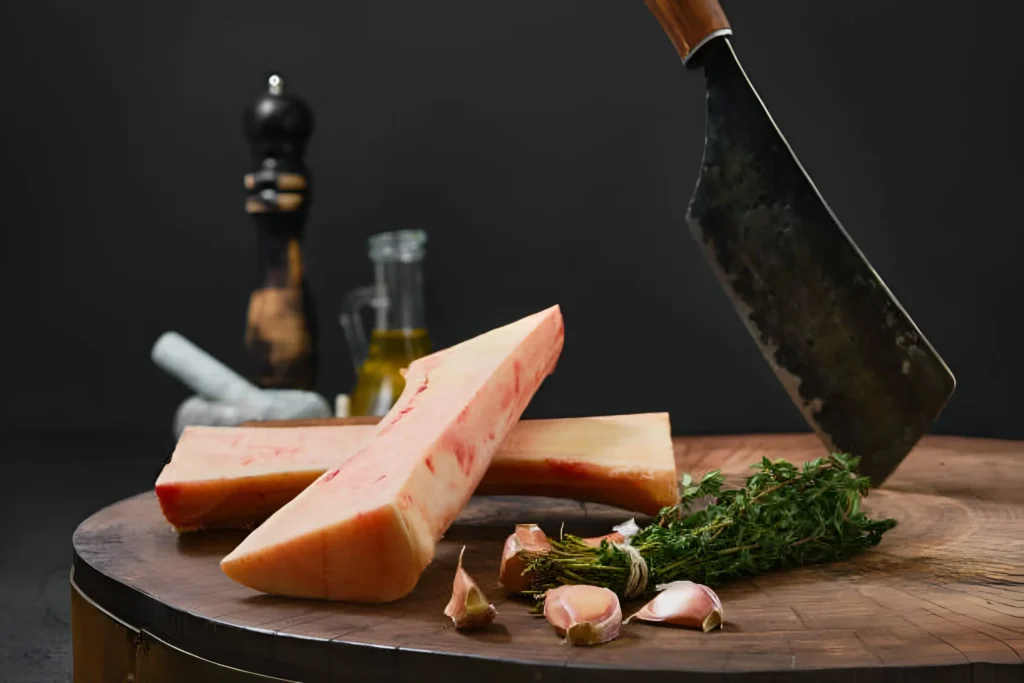
Making the perfect bone marrow stock recipe needs skill and care. Even skilled cooks can make mistakes that ruin their soup. Knowing these common errors helps you make a rich, tasty bone marrow stock every time.
Success in your bone marrow stock recipe depends on avoiding key mistakes. These mistakes can ruin your cooking. By knowing what to avoid, you can improve your cooking and get a delicious result.
Temperature Control Challenges
Temperature is key for a clear and flavorful bone marrow stock. Boiling too hard can cause problems:
- Cloudy broth from too much stirring
- Proteins breaking down
- Loss of flavor
Seasoning Missteps
Seasoning is an art in making bone marrow stock. Here are common mistakes to avoid:
- Not seasoning enough, leading to bland stock
- Adding too much salt at first
- Adding herbs too soon, making them bitter
Storage and Preservation Errors
Storing your bone marrow stock right is key to keeping its quality. Mistakes to avoid include:
- Cooling stock too slowly
- Storing in containers that aren’t airtight
- Keeping stock too long in the fridge
Pro tip: Cool your bone marrow stock fast and store it in shallow containers for even cooling.
Health Benefits of Regular Bone Marrow Consumption
Bone marrow soup is more than just a tasty dish. It’s a nutritional powerhouse with amazing health benefits. Your body can get a lot of good from eating this nutrient-rich broth regularly.
The nutritional profile of bone marrow soup is impressive. It’s full of essential nutrients that support many body systems:
- Supports joint health through high collagen content
- Enhances skin elasticity and appearance
- Provides critical minerals like calcium and phosphorus
- Boosts immune system functionality
Minerals in bone marrow soup are key for your overall health. Calcium strengthens bones, and phosphorus helps with cell repair. Magnesium is good for muscles and nerves, making bone marrow soup a great nutritional supplement.
Your gut health can also get a boost from bone marrow soup. The amino acids and gelatin in the broth help fix the intestinal lining. This can reduce inflammation and help with digestion.
“Food is medicine when chosen wisely” – Traditional Nutrition Wisdom
Another great benefit of bone marrow soup is its support for the immune system. The mix of minerals, amino acids, and nutrients helps your body fight off illnesses better.
Transforming Basic Broth into Gourmet Soup Variations
Your bone broth marrow bones recipe can be more than just a simple stock. With a little creativity, you can turn it into a gourmet dish. This will make your meals exciting and show off your cooking talent.
Turning your bone broth into something special opens up a world of flavors. You can make dishes that wow your family and friends. It’s all about using the versatility of marrow-based broths.
Asian-Inspired Soup Transformations
Asian cuisines offer amazing ways to change up your bone broth marrow bones recipe. Here are some cool variations:
- Vietnamese-style Pho with rich marrow broth
- Japanese Ramen with deep, complex flavors
- Korean Seolleongtang featuring milky bone marrow base
European Classic Soup Adaptations
European cooking traditions bring elegance to your bone broth. Here are some ways to make it fancy:
| Soup Style | Key Characteristics | Marrow Broth Enhancement |
|---|---|---|
| French Consommé | Clear, intensely flavored | Ultra-refined marrow base |
| French Onion Soup | Rich, caramelized onions | Deep bone marrow foundation |
| Austrian Gulasch | Hearty meat stew | Robust marrow-enhanced broth |
Exploring these global techniques lets you find many ways to make your bone broth special. You’ll create dishes that celebrate cooking from around the world.
Storage Solutions and Reheating Guidelines

Keeping your bone marrow broth soup fresh is key. You need to pay attention to how you store and reheat it. This ensures the soup stays tasty and healthy, and it’s safe to eat.
Here’s how to store your bone marrow soup right:
- Cool the bone marrow broth soup completely before storing
- Use airtight containers to prevent contamination
- Refrigerate within two hours of cooking
Freezing is great for keeping your soup fresh for longer. Consider these smart preservation techniques:
- Freeze bone marrow broth soup in portion-sized containers
- Use ice cube trays for small, convenient servings
- Vacuum seal for extended preservation
When reheating, be gentle to keep the soup’s quality. Warm it slowly over medium-low heat. Stir now and then to spread the heat. Don’t boil it, as it can damage the soup’s proteins and nutrients.
Remember, how long you store your soup matters:
- Refrigerated soup: 3-4 days
- Frozen soup: Up to 4-6 months
Pro tip: Always check for any signs of spoilage before consuming stored bone marrow broth soup, such as unusual odors or discoloration.
Pairing Suggestions and Serving Recommendations
To make your beef bone marrow soup special, think about what to pair and how to present it. The soup’s deep flavors need the right sides to match its bold taste.
Pairing the right wine and sides can turn your soup into a standout meal. Knowing how to choose these elements will make your meal better and wow your guests.
Wine Selections to Elevate Your Soup
Finding the perfect wine for beef bone marrow soup is key. Here are some top picks:
- Full-bodied red wines: Cabernet Sauvignon adds a complex taste
- Syrah has peppery notes that go well with the soup’s richness
- Malbec brings fruity flavors that balance the marrow’s boldness
Complementary Side Dishes
Choose sides that balance the soup’s richness:
- Crusty sourdough bread for dipping
- Light arugula salad with citrus vinaigrette
- Roasted seasonal vegetables
- Pickled vegetable garnishes
By picking the right wine and sides, you’ll make your beef bone marrow soup unforgettable. It will delight your guests’ senses.
Seasonal Adaptations for Your Bone Marrow Soup
Changing your bone marrow soup with the seasons can make it even better. Each season offers new ingredients and tastes that can update your favorite recipe.
Summer is the time for lighter, fresher bone marrow soup versions. Try these cool changes:
- Chilled herb-infused bone marrow consommé
- Light soup with fresh garden vegetables
- Zesty citrus-enhanced bone marrow broth
Winter, on the other hand, is for heartier, warming soups. Look into these comforting options:
- Root vegetable-packed bone marrow soup
- Spicy winter soup with warming spices
- Thick, creamy bone marrow soup with seasonal squash
Your bone marrow soup can change with the seasons. Spring might bring a green-herb soup, while autumn could mean a mushroom-rich version.
Pro tip: Always use fresh, seasonal ingredients to boost flavor and nutrition in your bone marrow soup.
Conclusion
Learning to make bone marrow stock is more than just cooking. It’s a journey into the world of rich, nourishing food. You’ve seen how marrow-based broths can add depth and nutrition to your meals.
Every technique you’ve learned is a step towards making dishes that warm your soul. These dishes connect you to the old ways of cooking.
Exploring bone marrow soup shows its wide range of uses in different cuisines. You now know how to pick the best bones and understand complex flavors. This knowledge lets you turn simple ingredients into amazing meals.
The bone marrow stock recipe is about more than just following steps. It’s about choosing ingredients that are good for you and your health.
As you keep trying new things with this recipe, remember that cooking is a way to express yourself. Whether it’s for your family or to impress friends, bone marrow soup has endless possibilities. Your new skills will make your cooking better and healthier.
Start your culinary journey, trust your instincts, and dive into the world of bone marrow cooking. Your adventures in the kitchen are just starting.
FAQ
What exactly is bone marrow soup?
Bone marrow soup is a rich broth made from beef bones. It’s simmered slowly to extract gelatin, minerals, and flavor. This creates a savory soup base that’s great on its own or for other recipes.
How long does it take to make a traditional bone marrow stock?
Making traditional bone marrow stock takes 12-24 hours. This slow cooking breaks down bones, releasing collagen and minerals. It makes a flavorful, gelatinous broth.
Where can I source high-quality marrow bones?
Find quality marrow bones at butchers, farmers markets, and specialty stores. Grass-fed, pasture-raised cattle bones are best. Online meat delivery services also offer great options.
Is bone marrow soup nutritionally beneficial?
Yes, it’s very nutritious. It’s full of collagen, minerals, amino acids, and has anti-inflammatory properties. It supports joints, gut health, and boosts immunity, making it great for wellness.
Can I freeze bone marrow stock for later use?
Absolutely! It freezes well in airtight containers or bags for 4-6 months. Freezing in ice cube trays is a great tip for adding flavor to recipes without thawing a whole batch.
What’s the difference between bone broth and bone marrow soup?
Bone broth is thinner and made with bones and meat. Bone marrow soup focuses on marrow, making it gelatinous and more flavorful. It’s richer in nutrients from the marrow.
Are there vegetarian alternatives to bone marrow soup?
Yes, there are vegetarian options. They use mushroom stock, roasted veggies, seaweed, and miso to mimic the flavor. They offer similar depth but not the same nutritional profile as traditional bone marrow soup.
How can I tell if my marrow bones are fresh?
Fresh bones have a clean smell and are white or pink. The marrow should be soft and even in color. Avoid gray or brown. Buy from trusted sources and check for clear, unblemished bones.
Add a Dash of Your Thoughts!
There are no reviews yet. Be the first one to write one.

